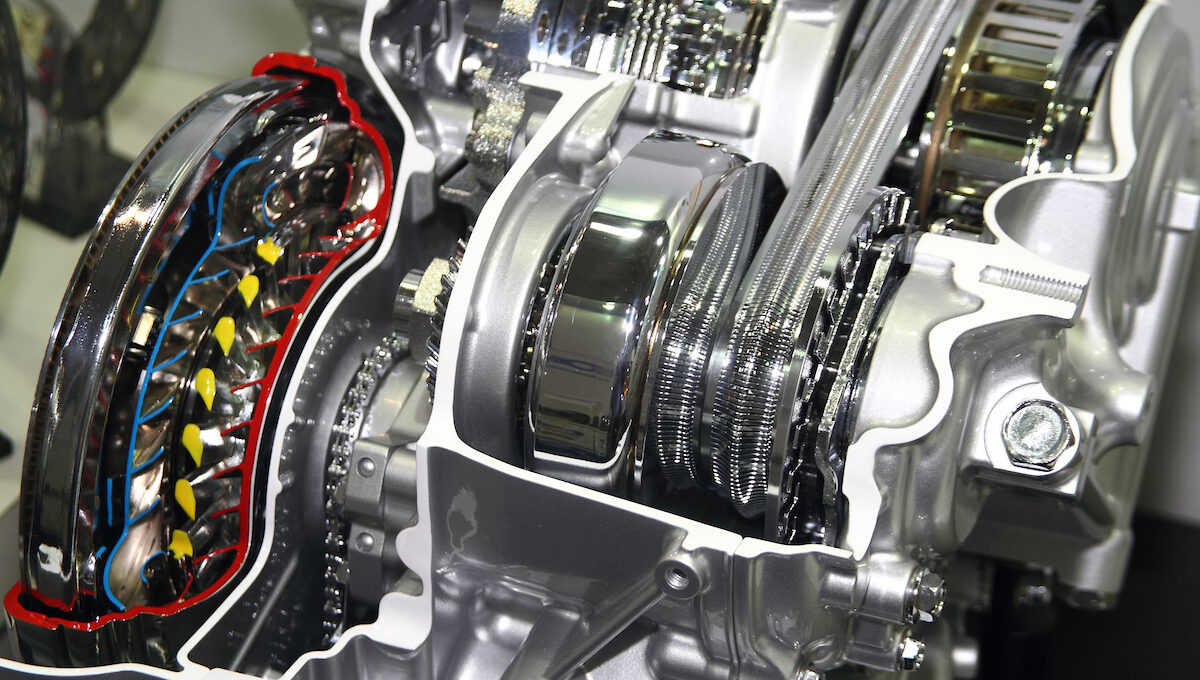If you are driving a newer automatic transmission vehicle, it is likely that it is equipped with a continuous variable transmission (CVT). More automatics made within the last fifteen years have adapted to CVT to improve overall driving performance. Unlike traditional automatic transmissions that use a set number of gears, a CVT adjusts the gear ratio in a fluid, uninterrupted manner. This modern enhancement in vehicle design provides a more efficient and smoother transmission. In this month’s blog post, we examine the workings of a CVT, discuss some common issues it might face, and provide tips on how to maintain it.
Understanding the CVT
A CVT operates similarly to an automatic transmission, eliminating the need for the driver to manually shift gears. Where the CVT differs from the automatic, is that is does not use gears. The CVT employs two pulleys linked by a robust belt or chain that can alter its diameters based on the vehicle’s power requirements, providing the necessary transmission support. By adjusting the pulley diameters, the CVT can align the gear ratio with the engine and vehicle speed, allowing the engine to function at its most efficient RPM (revolutions per minute) in any driving scenario. This results in smoother acceleration and deceleration without abrupt shifts or jolts.
Potential Issues with CVTs
Despite its benefits, a CVT can have its share of problems. Some common CVT issues include:
- Lag: There might be a delay or lag when the driver steps on the accelerator pedal, as the CVT needs time to adjust the gear ratio. While not a mechanical problem, it can impact the driving experience and vehicle performance.
- Noise: During acceleration, a CVT might generate a loud droning or whining noise as the engine maintains a high RPM.
- Overheating: Excessive friction, high temperatures, or insufficient fluid levels can cause a CVT to overheat. This can damage the belt, leading to slippage, breakage, or wear.
- Durability: A CVT might not have the same lifespan as a traditional automatic transmission, as the belt or chain can wear out faster due to the friction and tension of the components.
Maintaining Your CVT
There are regular maintenance tasks that you can include in your vehicle plan to help extend the functioning and longevity of the CVT.
- Monitor and change CVT fluid, if necessary: Periodically, it is helpful to monitor the condition of your vehicle’s CVT fluid. You also want to maintain the level based on your vehicle manufacturer’s guidelines. Good CVT fluid is clear – if it appears dark or dirty then it is time to change the fluid. Changing fluid depends a lot on your specific driving habits and driving conditions, but usually it is advisable to change fluid every thirty to sixty thousand miles driven. Consult with your vehicle owner’s manual.
- Focus on careful driving habits: If you tend to drive hard, or suddenly accelerate, brake, or turn, this could impact your CVT. Alter your hard driving habits for a gentler and smoother approach. Also, keep in mind that the CVT can be affected by extreme temperatures, or frequently driving in dusty road conditions.
Remember, you can directly impact your vehicle’s performance and efficiency by giving more attention to how you are treating your vehicle’s CVT. A more attentive approach can mean a lot for your driving experience and prolonging your vehicle’s transmission life. If you have questions or concerns about your vehicle’s continuous variable transmission, contact the service professionals at Shade Tree Garage to schedule an appointment.
The post Continuous Variable Transmission (CVT) first appeared on Shade Tree Garage | Morristown, NJ.
